DNA framework signal amplification platform-based high-throughput systemic immune monitoring
- PMID: 38320992
- PMCID: PMC10847453
- DOI: 10.1038/s41392-024-01736-0
DNA framework signal amplification platform-based high-throughput systemic immune monitoring
Abstract
Systemic immune monitoring is a crucial clinical tool for disease early diagnosis, prognosis and treatment planning by quantitative analysis of immune cells. However, conventional immune monitoring using flow cytometry faces huge challenges in large-scale sample testing, especially in mass health screenings, because of time-consuming, technical-sensitive and high-cost features. However, the lack of high-performance detection platforms hinders the development of high-throughput immune monitoring technology. To address this bottleneck, we constructed a generally applicable DNA framework signal amplification platform (DSAP) based on post-systematic evolution of ligands by exponential enrichment and DNA tetrahedral framework-structured probe design to achieve high-sensitive detection for diverse immune cells, including CD4+, CD8+ T-lymphocytes, and monocytes (down to 1/100 μl). Based on this advanced detection platform, we present a novel high-throughput immune-cell phenotyping system, DSAP, achieving 30-min one-step immune-cell phenotyping without cell washing and subset analysis and showing comparable accuracy with flow cytometry while significantly reducing detection time and cost. As a proof-of-concept, DSAP demonstrates excellent diagnostic accuracy in immunodeficiency staging for 107 HIV patients (AUC > 0.97) within 30 min, which can be applied in HIV infection monitoring and screening. Therefore, we initially introduced promising DSAP to achieve high-throughput immune monitoring and open robust routes for point-of-care device development.
© 2024. The Author(s).
Conflict of interest statement
The authors declare no competing interests.
Figures

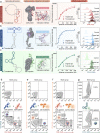
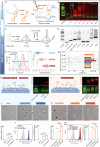
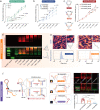
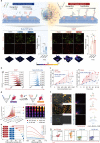
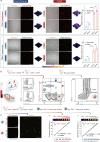
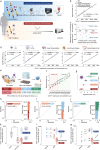
Similar articles
-
Systemic Inflammatory Response Syndrome.2025 Jun 20. In: StatPearls [Internet]. Treasure Island (FL): StatPearls Publishing; 2025 Jan–. 2025 Jun 20. In: StatPearls [Internet]. Treasure Island (FL): StatPearls Publishing; 2025 Jan–. PMID: 31613449 Free Books & Documents.
-
Automated devices for identifying peripheral arterial disease in people with leg ulceration: an evidence synthesis and cost-effectiveness analysis.Health Technol Assess. 2024 Aug;28(37):1-158. doi: 10.3310/TWCG3912. Health Technol Assess. 2024. PMID: 39186036 Free PMC article.
-
Signs and symptoms to determine if a patient presenting in primary care or hospital outpatient settings has COVID-19.Cochrane Database Syst Rev. 2022 May 20;5(5):CD013665. doi: 10.1002/14651858.CD013665.pub3. Cochrane Database Syst Rev. 2022. PMID: 35593186 Free PMC article.
-
The effect of sample site and collection procedure on identification of SARS-CoV-2 infection.Cochrane Database Syst Rev. 2024 Dec 16;12(12):CD014780. doi: 10.1002/14651858.CD014780. Cochrane Database Syst Rev. 2024. PMID: 39679851 Free PMC article.
-
Diagnostic accuracy of endoscopic ultrasonography (EUS) for the preoperative locoregional staging of primary gastric cancer.Cochrane Database Syst Rev. 2015 Feb 6;2015(2):CD009944. doi: 10.1002/14651858.CD009944.pub2. Cochrane Database Syst Rev. 2015. PMID: 25914908 Free PMC article.
Cited by
-
MicroRNA-29c-tetrahedral framework nucleic acids: Towards osteogenic differentiation of mesenchymal stem cells and bone regeneration in critical-sized calvarial defects.Cell Prolif. 2024 Jul;57(7):e13624. doi: 10.1111/cpr.13624. Epub 2024 Feb 27. Cell Prolif. 2024. PMID: 38414296 Free PMC article.
-
A DNA tetrahedron-based nanosuit for efficient delivery of amifostine and multi-organ radioprotection.Bioact Mater. 2024 May 21;39:191-205. doi: 10.1016/j.bioactmat.2024.05.017. eCollection 2024 Sep. Bioact Mater. 2024. PMID: 38808157 Free PMC article.
-
Tetrahedral Framework Nucleic Acid Relieves Sepsis-Induced Intestinal Injury by Regulating M2 Macrophages.Cell Prolif. 2025 May;58(5):e13803. doi: 10.1111/cpr.13803. Epub 2025 Jan 22. Cell Prolif. 2025. PMID: 39844345 Free PMC article.
-
Dynamic Interface-Assisted Rapid Self-Assembly of DNA Origami-Framed Anisotropic Nanoparticles.JACS Au. 2024 Mar 8;4(3):903-907. doi: 10.1021/jacsau.4c00145. eCollection 2024 Mar 25. JACS Au. 2024. PMID: 38559741 Free PMC article.
-
Tetrahedral framework nucleic acids/hyaluronic acid-methacrylic anhydride hybrid hydrogel with antimicrobial and anti-inflammatory properties for infected wound healing.Int J Oral Sci. 2024 Apr 16;16(1):30. doi: 10.1038/s41368-024-00290-3. Int J Oral Sci. 2024. PMID: 38622128 Free PMC article.
References
Publication types
MeSH terms
Substances
Grants and funding
LinkOut - more resources
Full Text Sources
Medical
Research Materials

